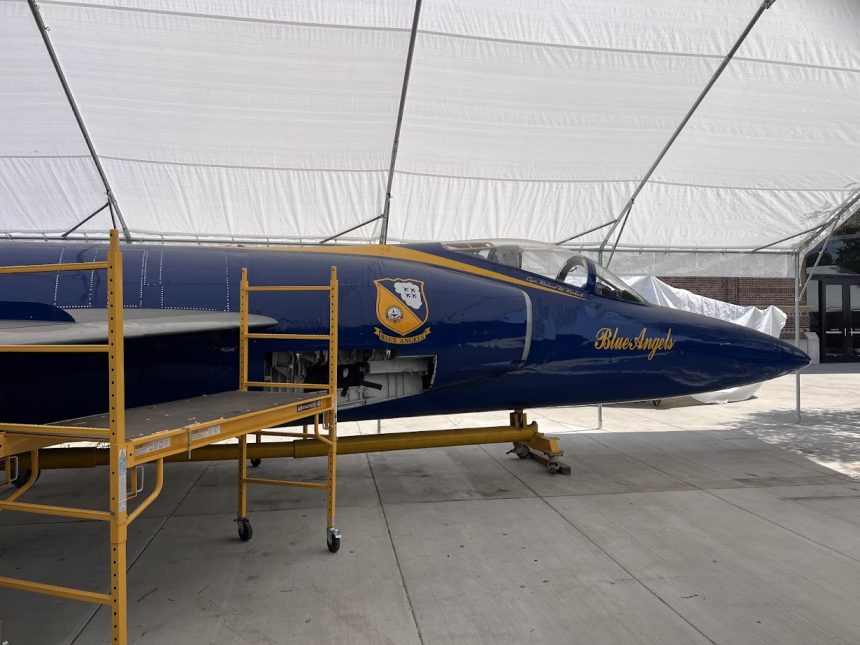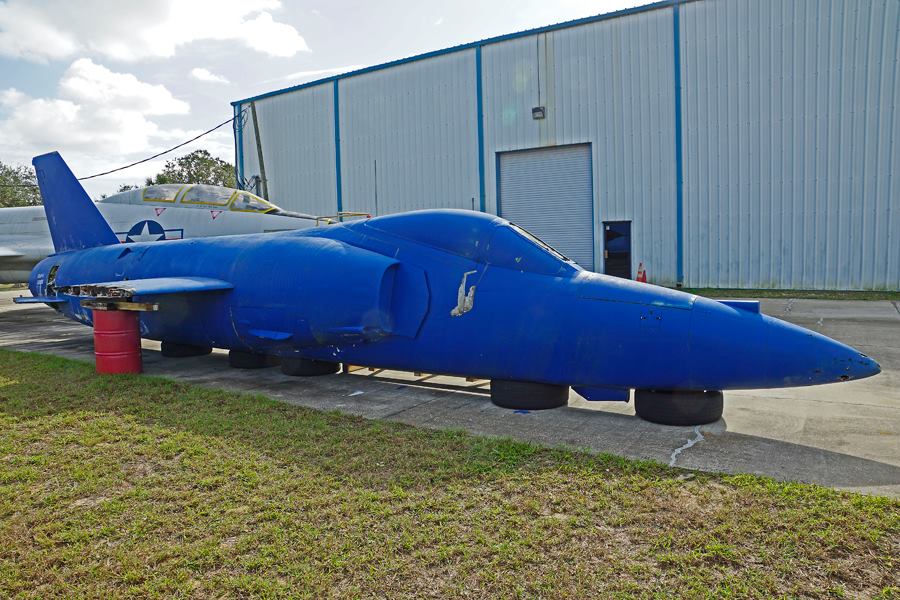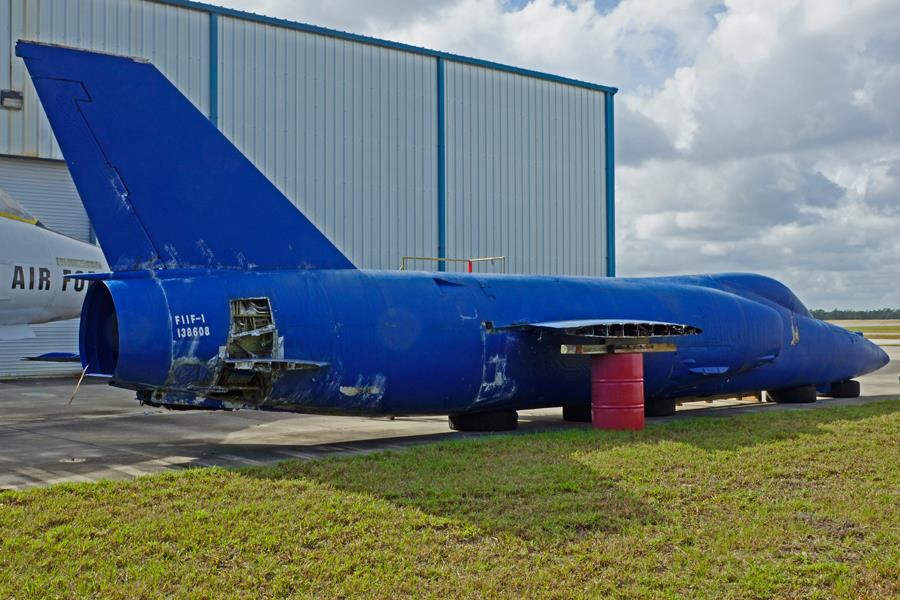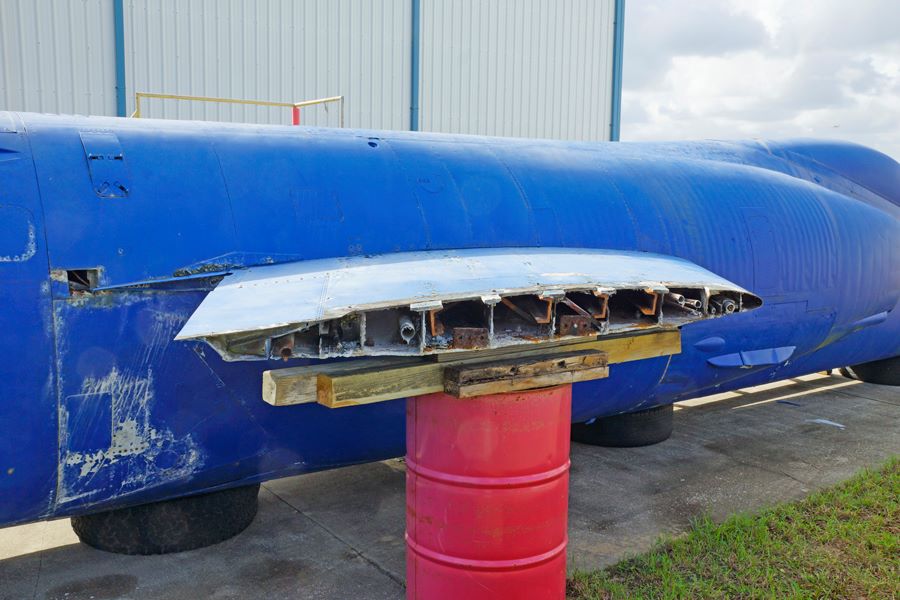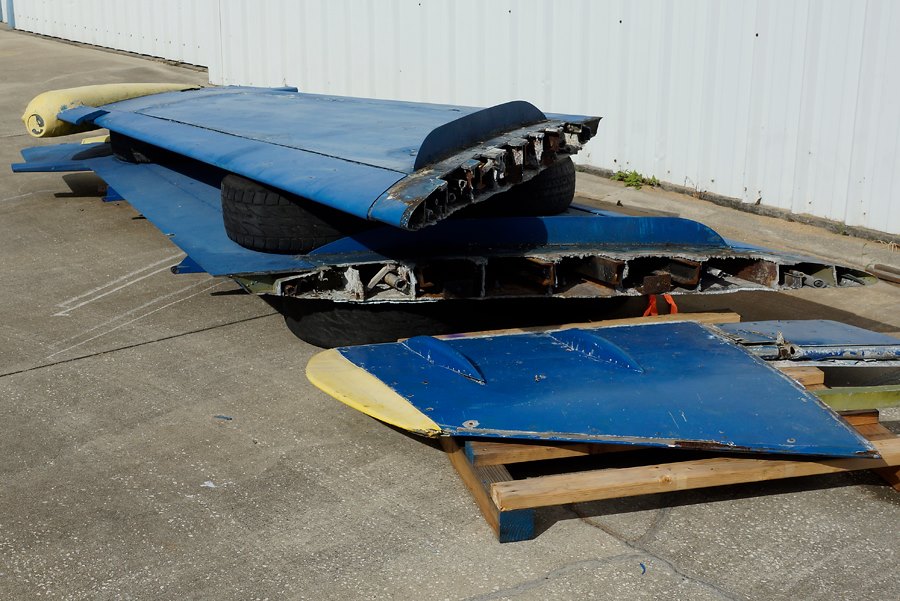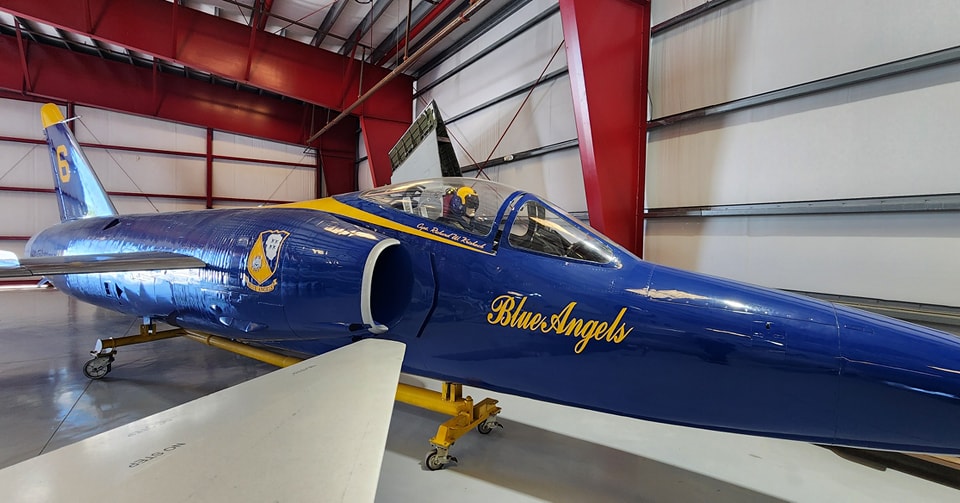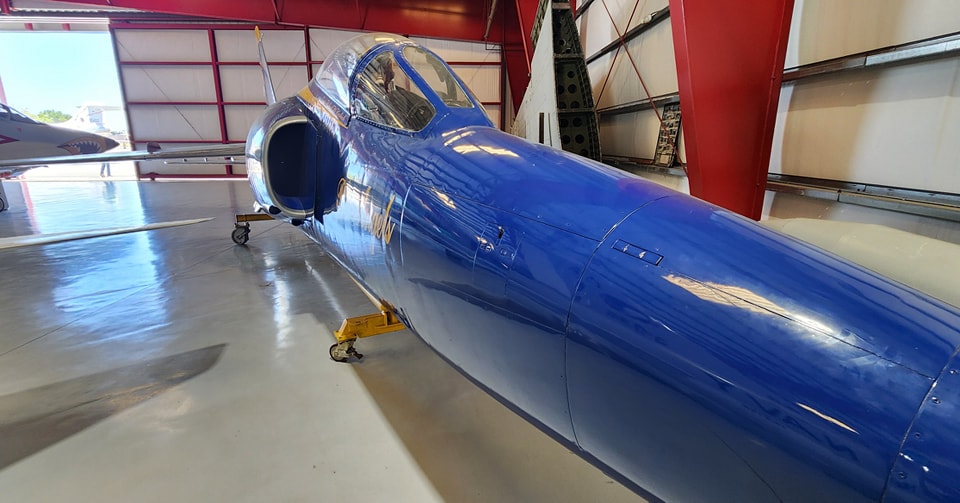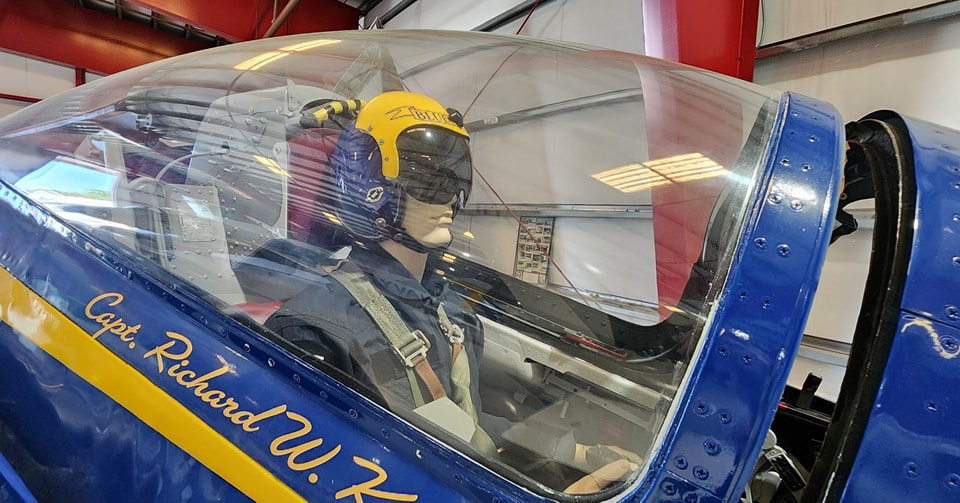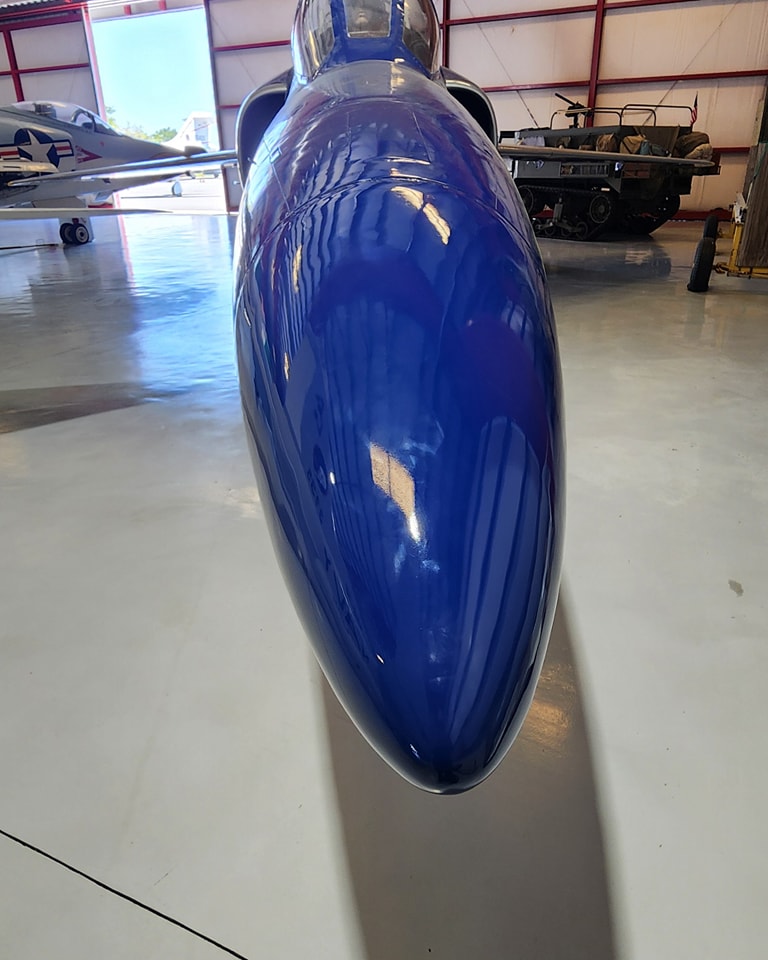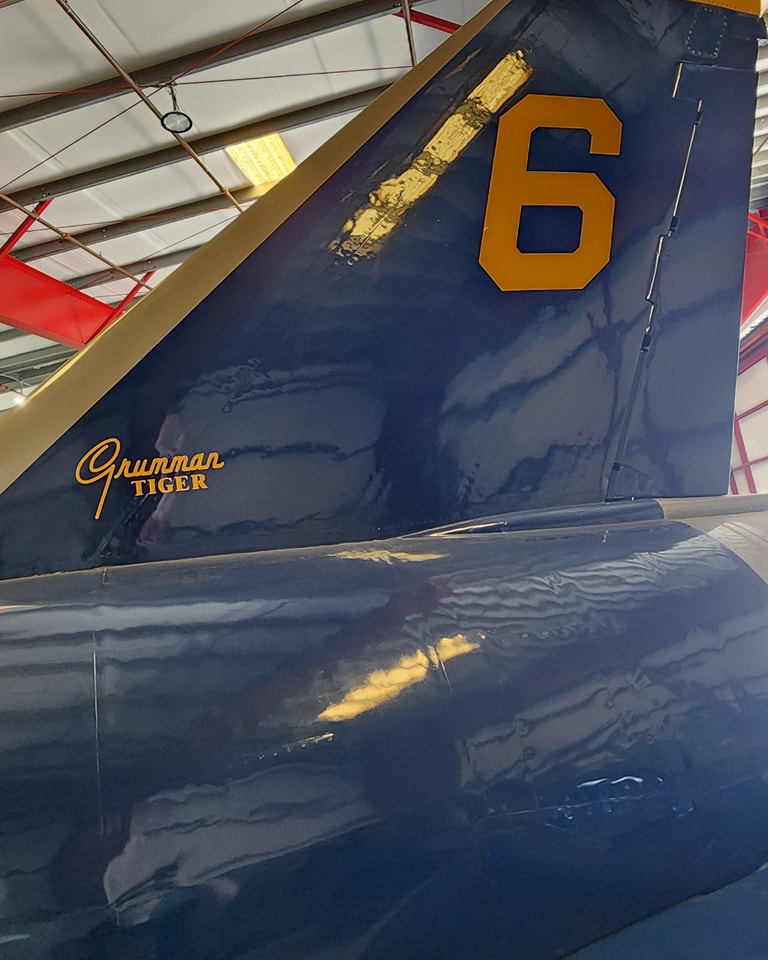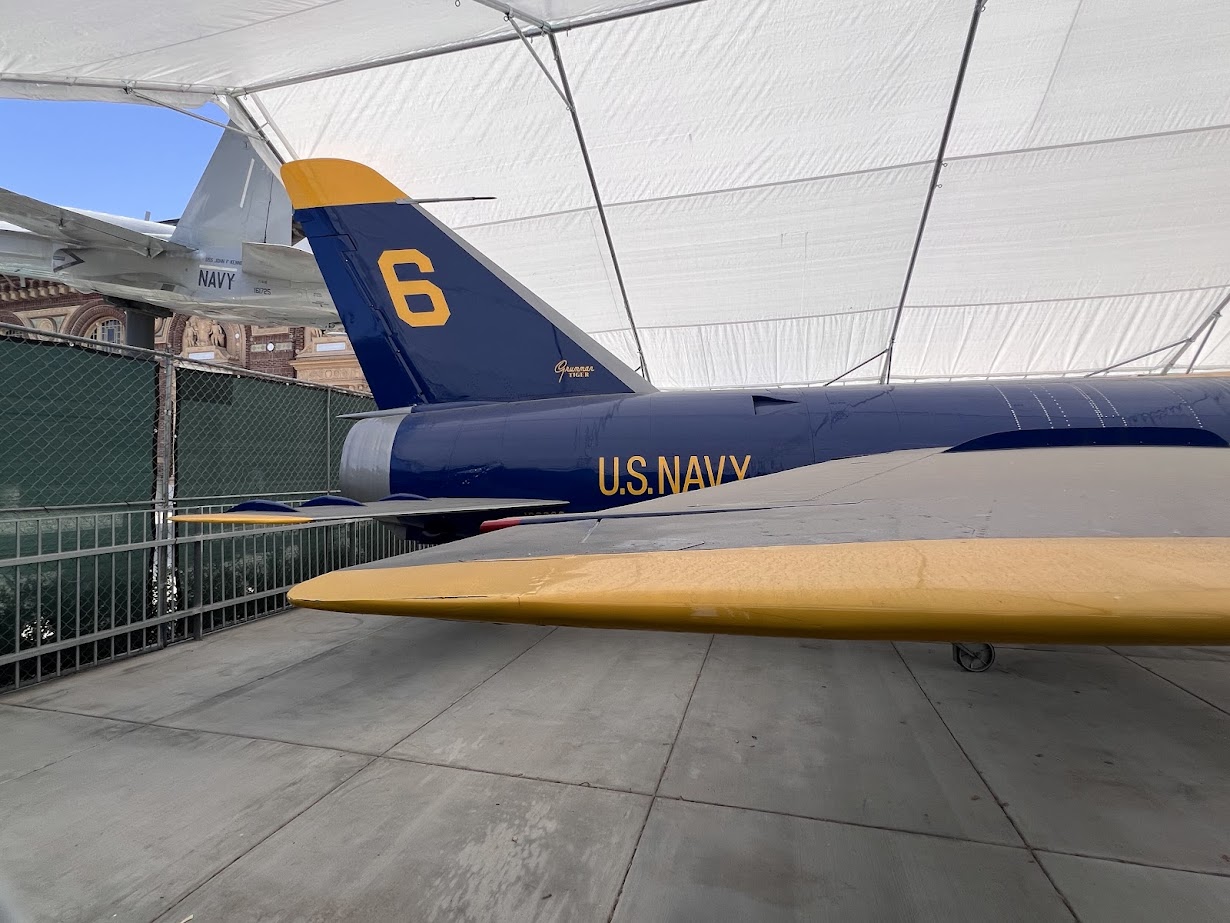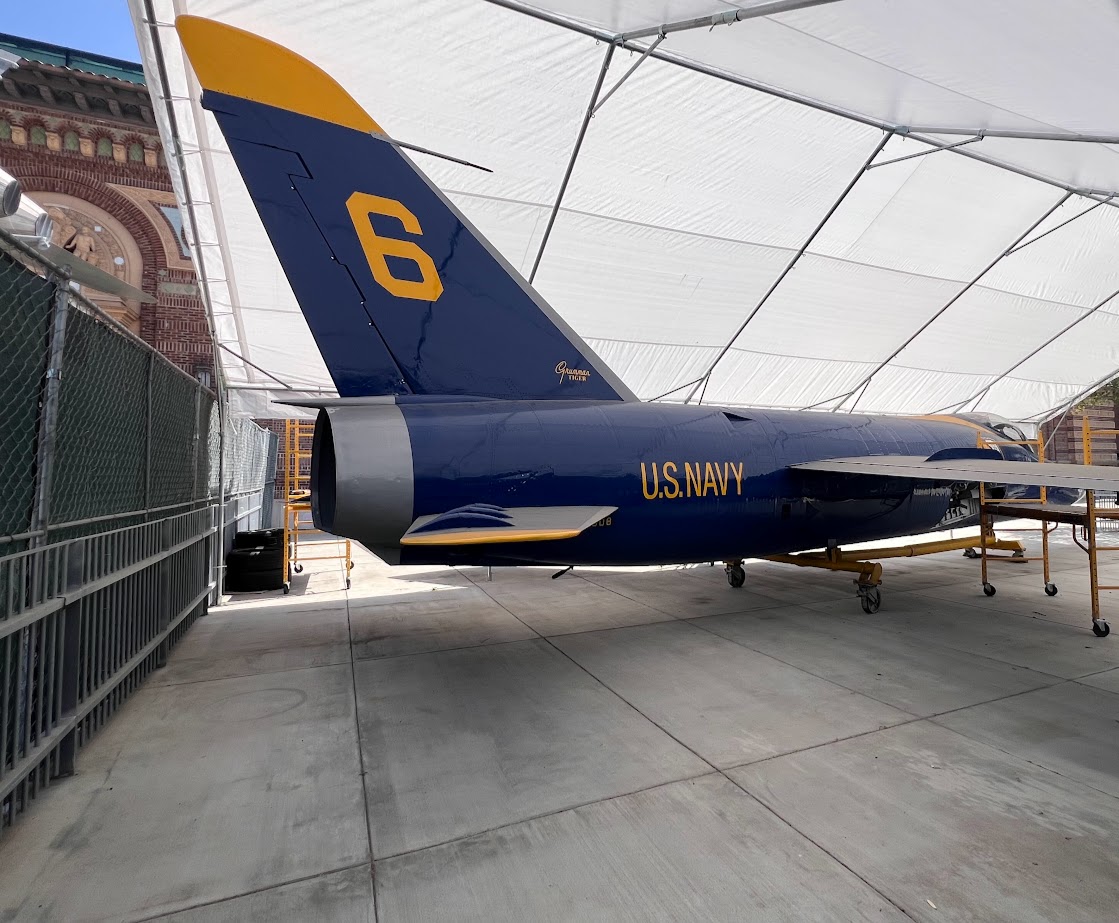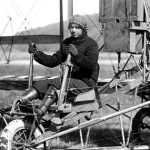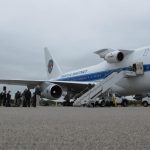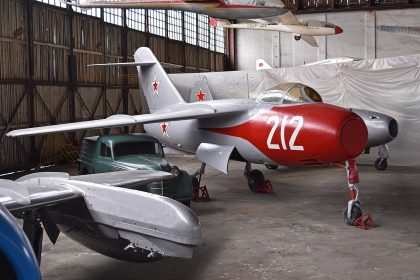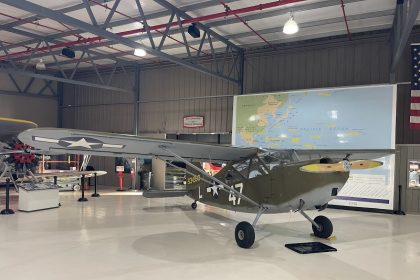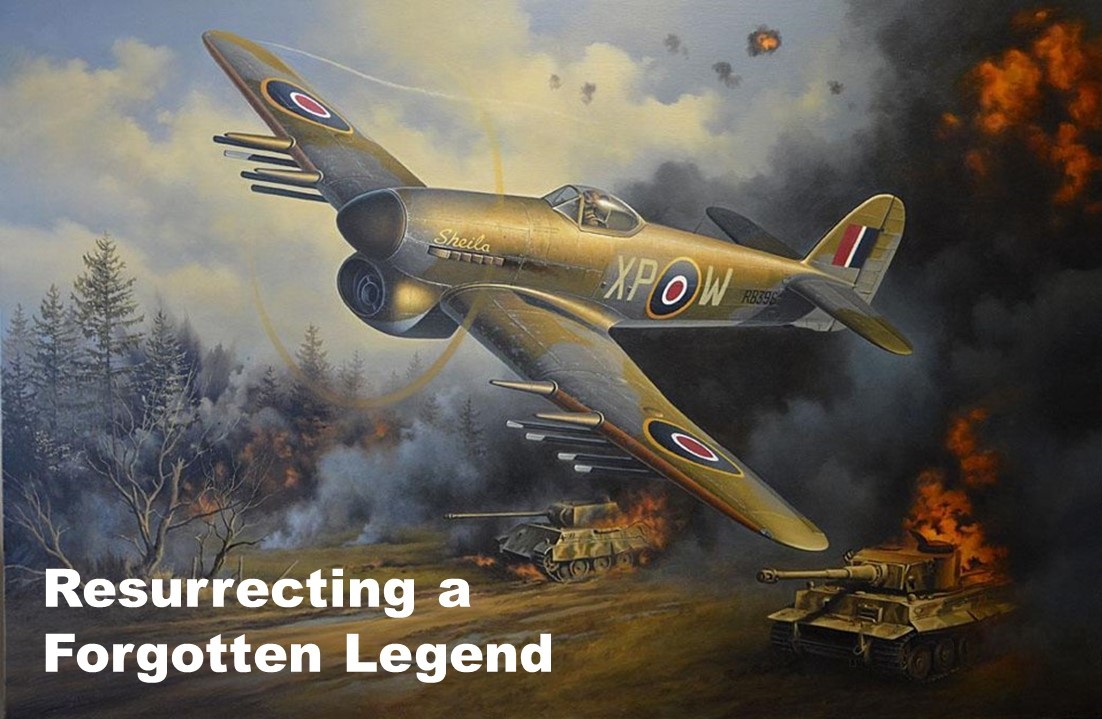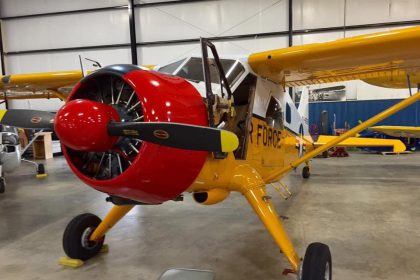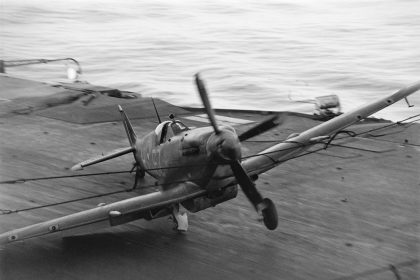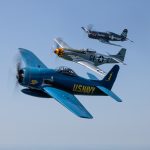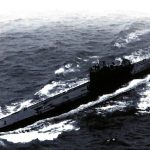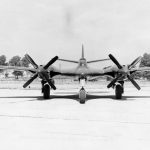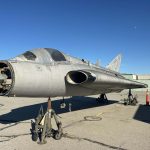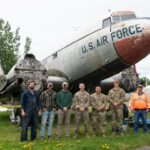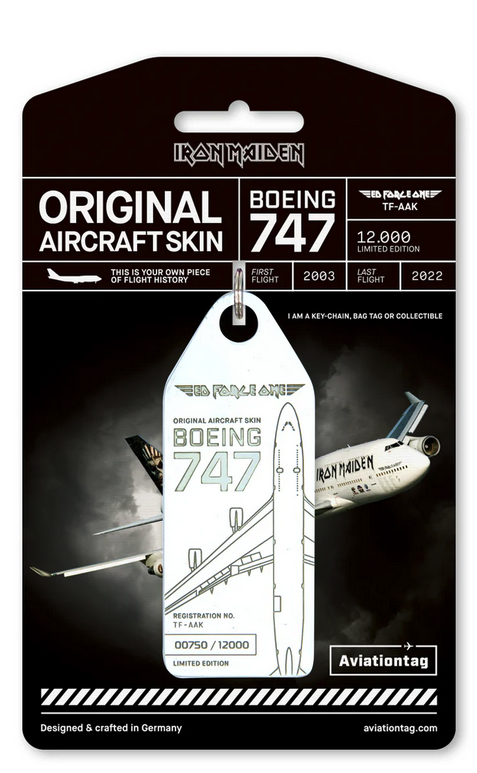In March 2025, a Grumman F11F Tiger in the distinctive blue and yellow colors of the Blue Angels appeared at the California Science Center in Los Angeles’ Exposition Park. Unbeknownst to many visitors, the aircraft has had quite the journey to get to the California Science Center, where it will be displayed in the looming structure taking shape above it, the Samuel Oschin Air and Space Center.

This Grumman F11F Tiger was originally built in 1955 at the Grumman Aircraft plant in Bethpage, NY, under the original U.S. Navy designation for the Grumman Model G-98, the F9F-9. As just the sixth Grumman Tiger built, it was delivered to the U.S. Navy as Bureau Number 138608 on February 28, 1955, less than two months before the Navy redesignated the Tiger as the F11F to distinguish it from the Grumman Panther and Cougar jets that came before it. BuNo 138608 made its first flight on March 12, 1955, at Bethpage, and just four days later, it was flown to Naval Air Station Patuxent River, MD for evaluation. Additionally, aircraft 138608 and its sister ship, BuNo 138609, were also brought to Edwards AFB, CA, for further flight evaluation.

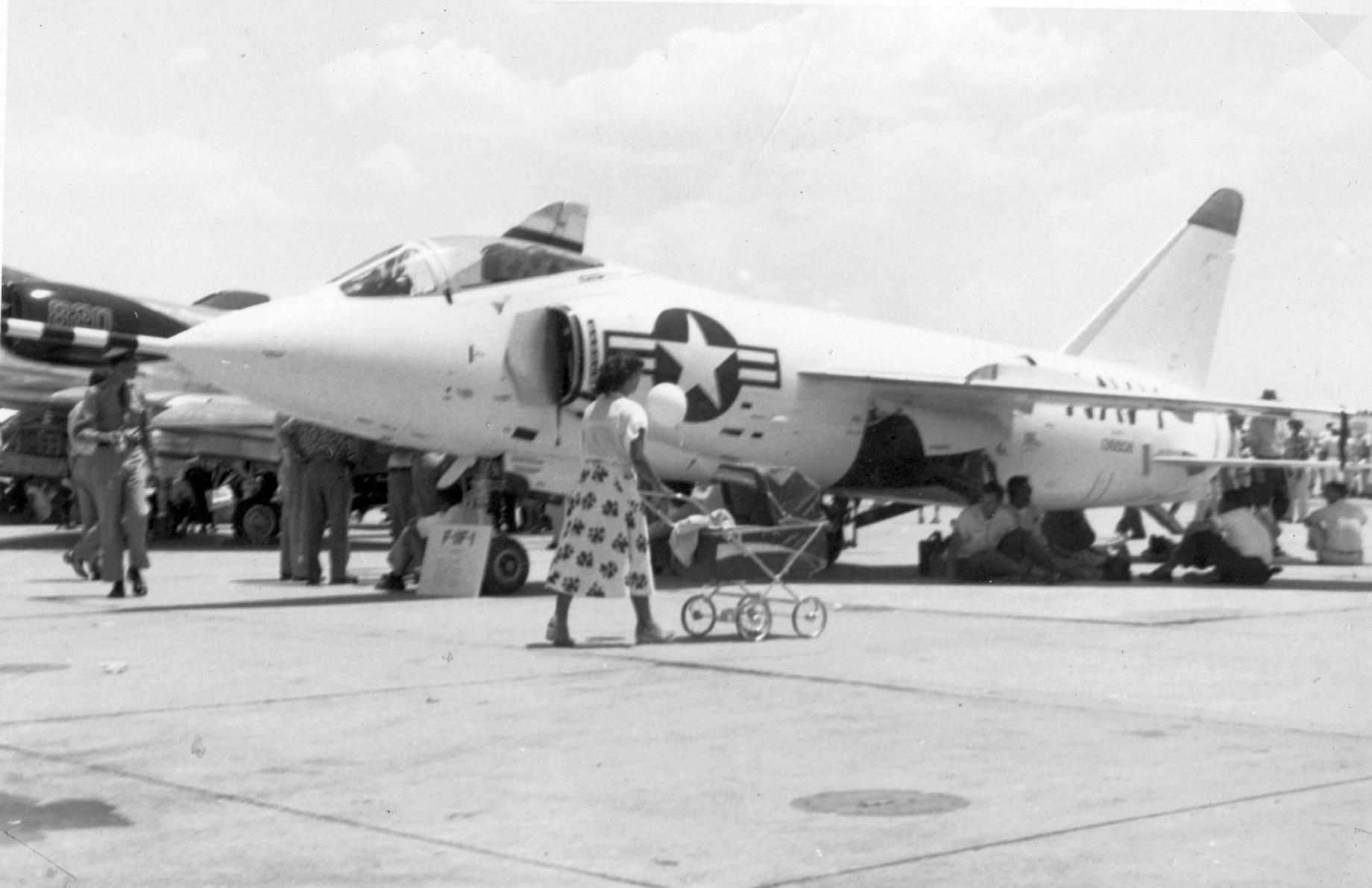
While the Grumman F11F Tiger (later redesignated after 1962 as the Grumman F-11 Tiger) was one of the most advanced carrier-based fighters of the mid-1950s, as it was the U.S. Navy’s first operational carrier-based supersonic fighter, jet aircraft and jet engines evolved rapidly during the 1950s to 1960s, making new aircraft obsolete in just a few short years. The Tiger was an example of this, being superseded by aircraft such as the Vought F8U (later F-8) Crusader and the McDonnell F4H (later F-4) Phantom II. By 1961, the F11F had been retired from carrier flight decks, though they would be used as training aircraft until 1967, and the Blue Angels, the U.S. Navy Flight Demonstration Team, used the Tiger from 1957 to 1969, when they transitioned to the F-4 Phantom. As for F11F BuNo 138608, it was officially stricken off charge from the Navy on February 23, 1960, with just 299 flight hours on its airframe before the aircraft was placed into storage.
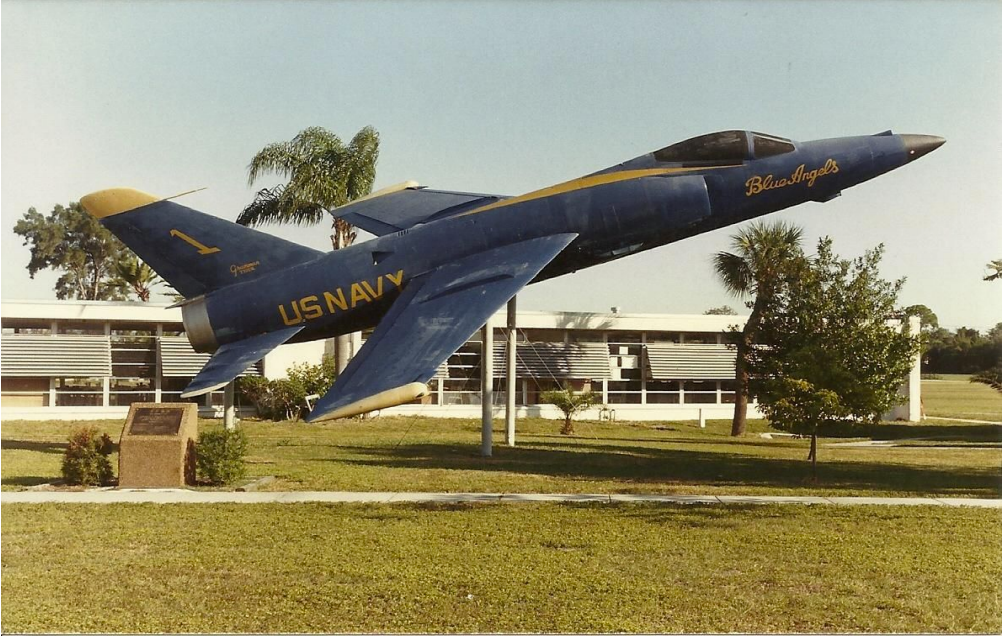

By 2016, Admiral Farragut Academy was planning to construct the building that would become the institution’s new multi-purpose center. Construction of the new building, however, meant removing the then 61-year-old fighter. In a 2016 article published in the Academy’s alumni publication The Farragut Experience, Academy Advancement Director Alison Lescarbeau stated, “Although the aircraft static display has been an iconic piece of our campus, it is time to remove it and build what will be a new iconic building. A building that will be the hub of our student activity. I am sad to see it go, but I welcome the prospect of a state-of-the-art building to meet our academic and social needs.” The Academy originally considering moving the aircraft to another part of the campus, but with no other suitable location, and considering the 30 years’ worth of salt air corrosion on the airframe from the coastal climate, the Admiral Farragut Academy accepted an offer from the California Science Center in Los Angeles to acquire the aircraft for static display. On November 16, 2016, the Anthony Crane company removed the aircraft from the pole it had stood on at the academy and was trucked to the Valiant Air Command, Inc. Warbird Museum in Titusville, FL, for restoration before its departure for Los Angeles.
Located on the Atlantic coast of Florida in proximity to Cape Canaveral, the Valiant Air Command, Inc. Warbird Museum already has experience with the Grumman F11F Tiger and has previously restored a later example of the aircraft, F11F-1 Tiger BuNo 141882, for display at their museum. The restoration of BuNo 138608, the oldest existing F-11 Tiger, got underway around 2017, and by 2024, the aircraft was restored with the iconic paint scheme of the Blue Angels, and was placed on temporary display at the museum, the fuselage resting on a cradle, until March 2025, when it was shipped to Los Angeles.
For now, the aircraft is undergoing additional refurbishment just outside the California Science Center, under the shadow of F/A-18A Hornet BuNo 161725. The Tiger is currently under a tarp canopy to protect it from the elements and is inside a temporary fence. Standing nose to nose with the Grumman Tiger is the first production model Northrop T-38A Talon, which served in the US Air Force as 59-1603 and later with NASA as N963NA. This aircraft was previously loaned by the California Science Center to the Western Museum of Flight at Torrance Airport/Zamperini Field before being brought to Exposition Park in 2024. Additionally, the wings and propellers of Douglas DC-3 N760 “Spirit of 76”, a former executive transport for 76 gas company (then Union 76) loaned by the California Science Center to the Flight Path Musuem and Learning Center at Los Angeles International Airport have been moved to the storage area with the Tiger and the Talon, and the rest of the aircraft will soon follow.

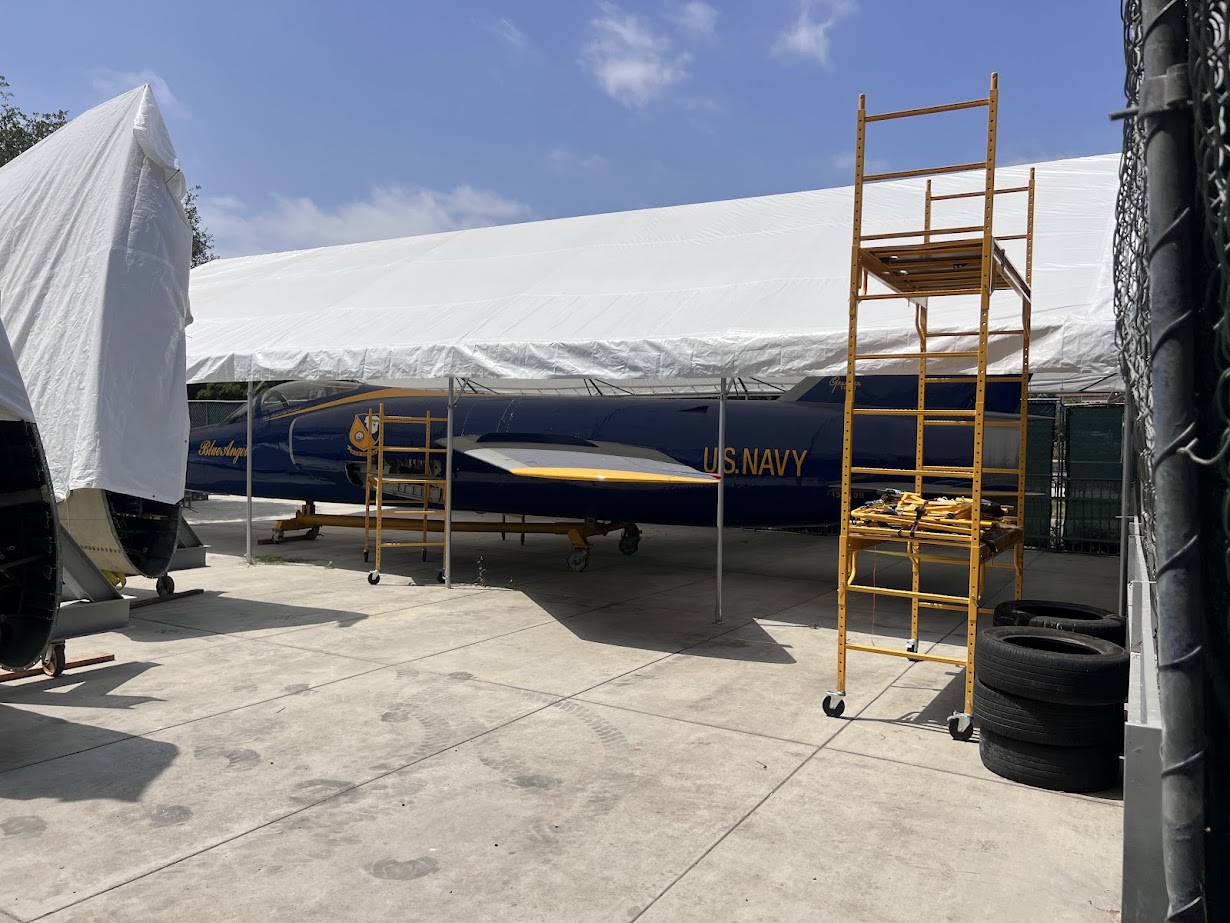
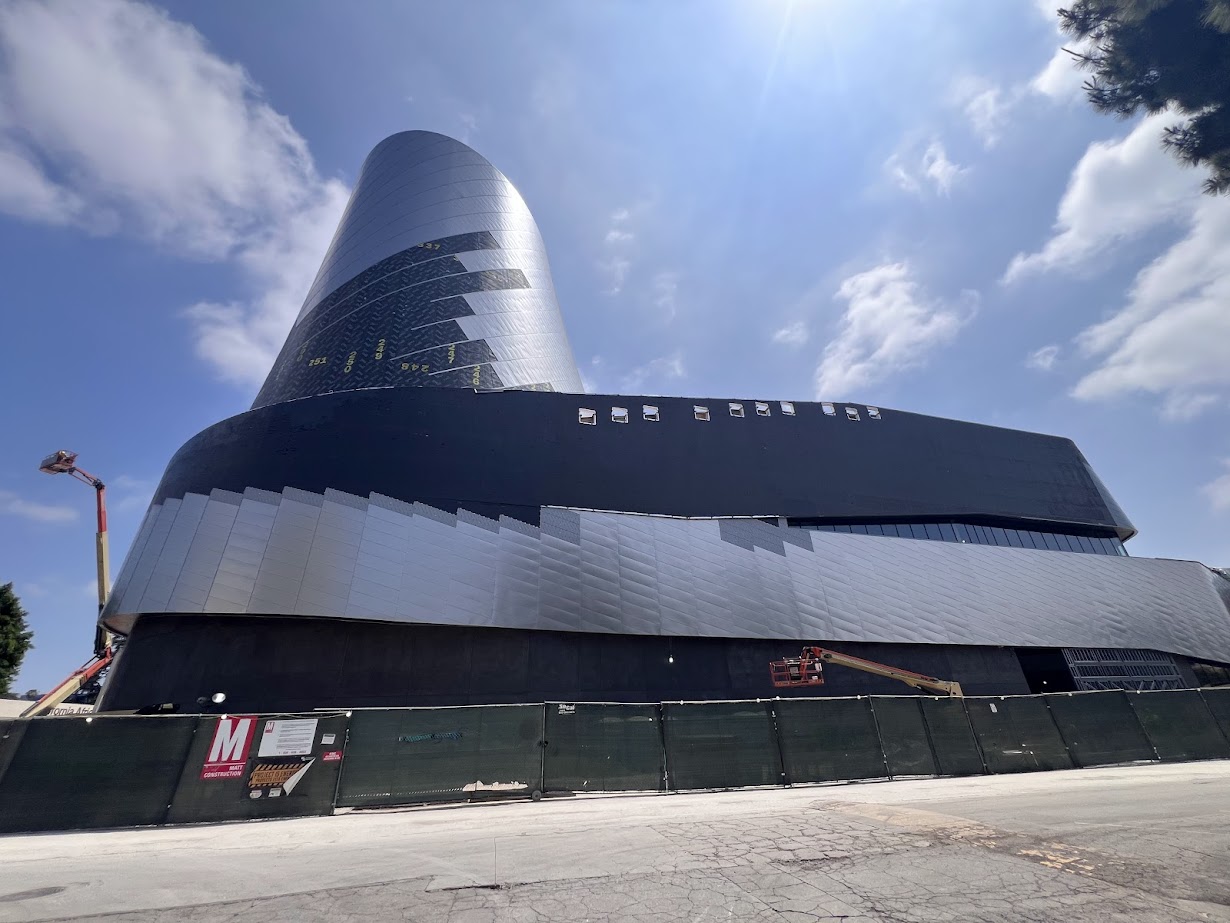
While the California Science Center has not disclosed an official opening date for the Samuel Oschin Air and Space Center, progress is well underway, and with major sporting events such as the 2026 FIFA World Cup, 2027 Super Bowl LXI, and the 2028 Summer Olympics and Paralympic Games all set to be hosted in Los Angeles, it seems very likely that the California Science Center’s Grumman F11F Tiger will soon be on display in one of the largest collections of aircraft and spacecraft in Southern California. For more information, visit the California Science Center’s website HERE








